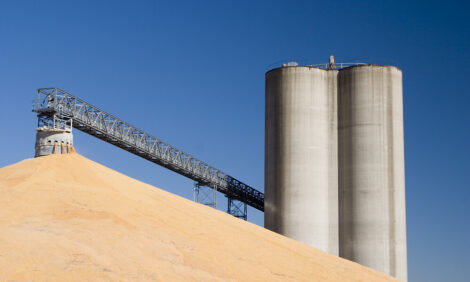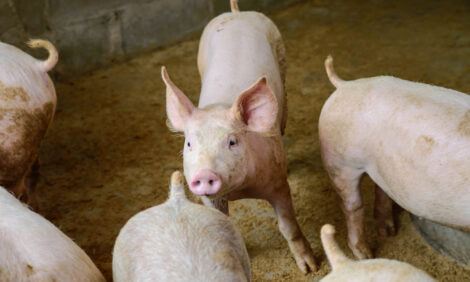



NADIS Veterinary Report & Forecast - February 2009
UK - This is a monthly report from the National Animal Disease Information Service (NADIS), looking at the data collected from their UK farm inspections.National figures over a number of years have shown that the average piglet mortality levels in all pig herds are in the region of 11 – 12 per cent of all pigs born alive.
NADIS figures for 2007 from selected herds reported upon by NADIS veterinary surgeons dipped below this level through the summer and autumn before rising in the winter. However, in 2008 losses were fractionally higher (Graph 1).

More interestingly following collection of 2 year’s data, is the apparent 2 phase cycle of losses within the year. The most distinct trough occurs in the summer months with a noticeable peak in the spring. Furthermore there is a suggestion of a further trough in winter preceded by another small peak. If these patterns are genuine and repeatable, it may suggest that the more variable temperatures typically experienced in spring and autumn have an hitherto unrecognised adverse effect within farrowing areas. Interestingly, the perception in outdoor herds, which make up approximately 25 per cent of this data, has historically tended to suggest higher losses in summer (litter desertion) and winter (hypothermia).

Breakdown data indicates higher losses in breeder-weaner farms than in all other types of unit (Graph 2) but this cannot be accounted for by herd size given that larger herds tend towards lower mortality (Graph 3) – breeder-weaner and breeding only farms will tend to be larger.

Between system, variation is small with very little differences measured between mortality rates recorded indoors and outdoors or between batches and continuous flow systems. The latter might suggest that the benefit of being able to concentrate staff attention during the farrowing period in batch systems is offset by the higher work load (Graph 4).

There is however a marked numerical difference in mortality rates recorded between herds farrowing on slats against those farrowing on straw, with the latter experiencing more than 20 per cent higher losses than slats. Again, if this is a genuine and repeatable observation it raises serious questions marks over the perceived benefits of straw based systems in farrowing areas. Given that outdoor herds will all be straw based, this observation suggests serious problems in straw based indoor systems.
Regional data (Graph 5) shows very little difference in losses recorded between the 2 main pig keeping areas of NE England and East Anglia (The high mortality levels recorded in S & SW England must be viewed with caution as herd numbers are low.) Previous observations have linked straw and slat differences (e.g. in health) with regional favouring of one or other system. This is clearly not the case with respect to piglet mortality.

As a final note, pre-weaning scour prevalence in 2008 appears to follow roughly the pattern of mortality (i.e. lower in summer with peaks in spring and late autumn) which is not necessarily surprising. However, a sharp rise in scour at the end of 2007/8 was surprisingly not reflected in an increased mortality.









